TORS OF DARTMOOR EXTRA
a collection of extra material from the tors of dartmoor team
Dartmoor Discovered: Mimetoliths or Faces in the RockTim Jenkinson on 30 April 2024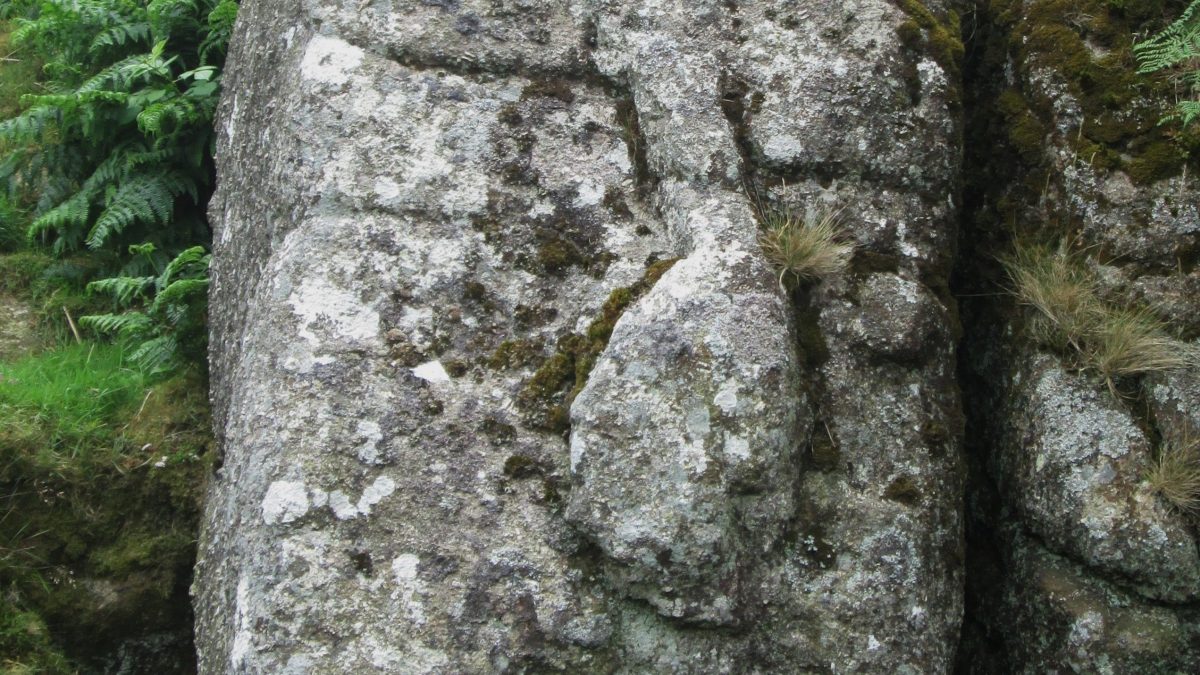 Hollow Tor Face An edited version of this article appeared in Dartmoor Magazine - Spring 2022 Issue 145The Dartmoor landscape is renowned for the multitude of mostly granite tors that protrude spectacularly from the slopes and hills. They are without doubt its finest feature huge crags that have been contorted by the elements for centuries into fantastic shapes and twisted rock stacks that readily capture the imagination of visitors stood in their midst. Sometimes the various splits, cracks, bumps and bedding of the granite lie in such a way that in a certain light and from a certain angle, they can fire the imagination to the extent that facial features might be seen hidden within the rocks. This peculiar yet common tendency of human perception is known in academic circles as Pareidolia. People with this propensity often see human faces in inanimate objects including something as sublime as Elvis Presley in a slice of cake or perhaps the shape of an animal in a mass of cloud. When this phenomenon occurs in rock formations the images are referred to as mimetoliths. Geologist Sharon Hill, founder of the website SpookyGeology.com explains that this word is best known from an article written in 1989 by R. V. Dietrich and is derived from the Greek words mimetes (an imitator) and lithos (stone). Writing a little earlier, John Michell in (1979) explains that people have always seen faces and familiar figures in nature and always will as it is a natural function of human consciousness. 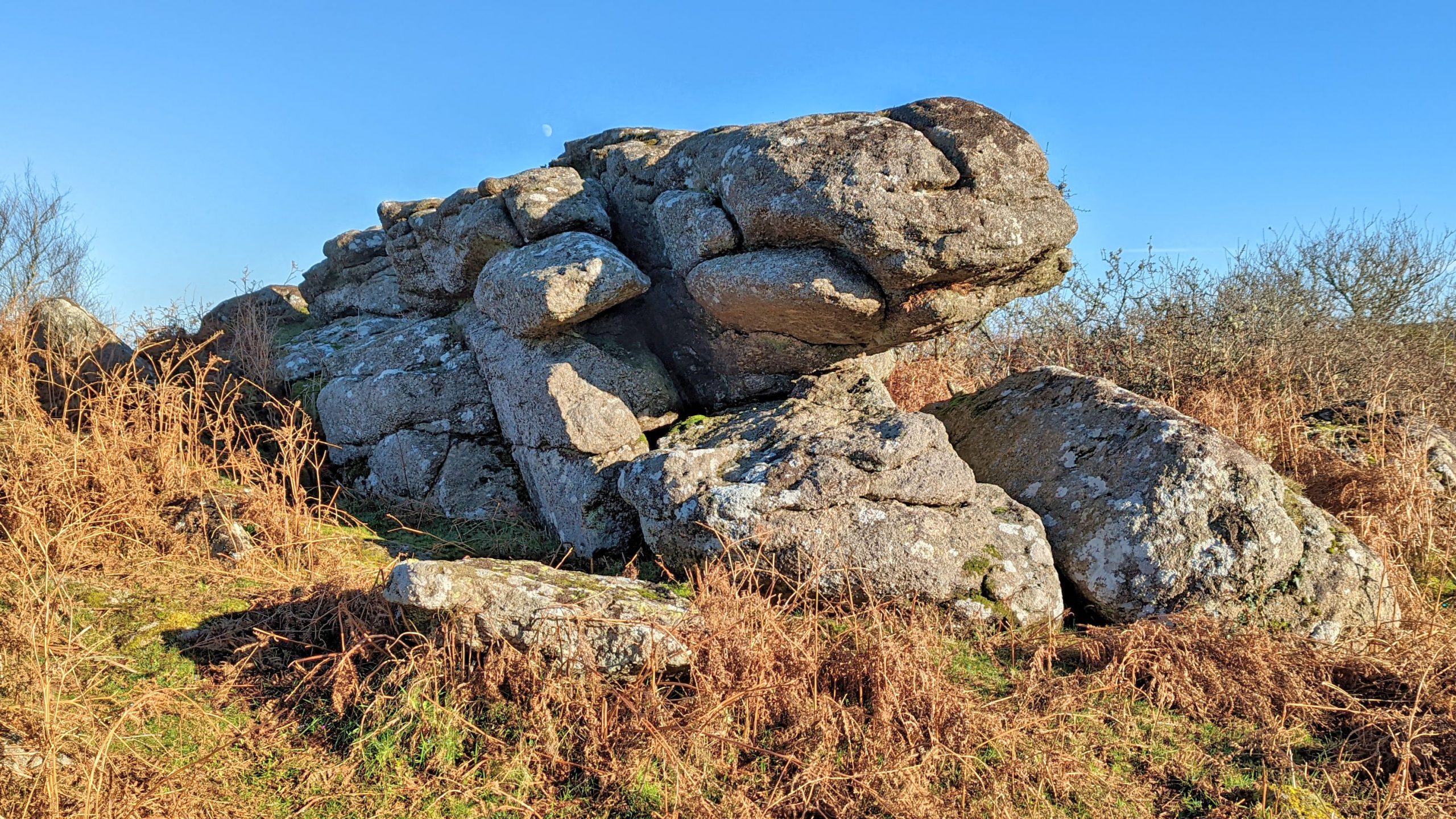 Pinmoor Rocks - a candidate for the frog? Sleeping giants, reclining women, and devil's marks are said to be the most common interpretations. So, in short it is simply a characteristic of human perception whereby using their imagination some people see shapes and patterns in rocks that they liken to recognisable features such as faces even though there should not be anything there. In 1958 the German scientist Klaus Conrad coined the word 'apophanie' to describe what he called a 'false realization' that Brugger (2007) later describes as a weakness of human cognition or as he puts it a 'pervasive tendency to see order in random configurations.' This short article is merely a light-hearted account of a few possible mimetoliths on Dartmoor that from my own personal perspective, are things that I think (and confirmed by some others) I have seen in the granite shapes. Pinmoor Rocks SX 755887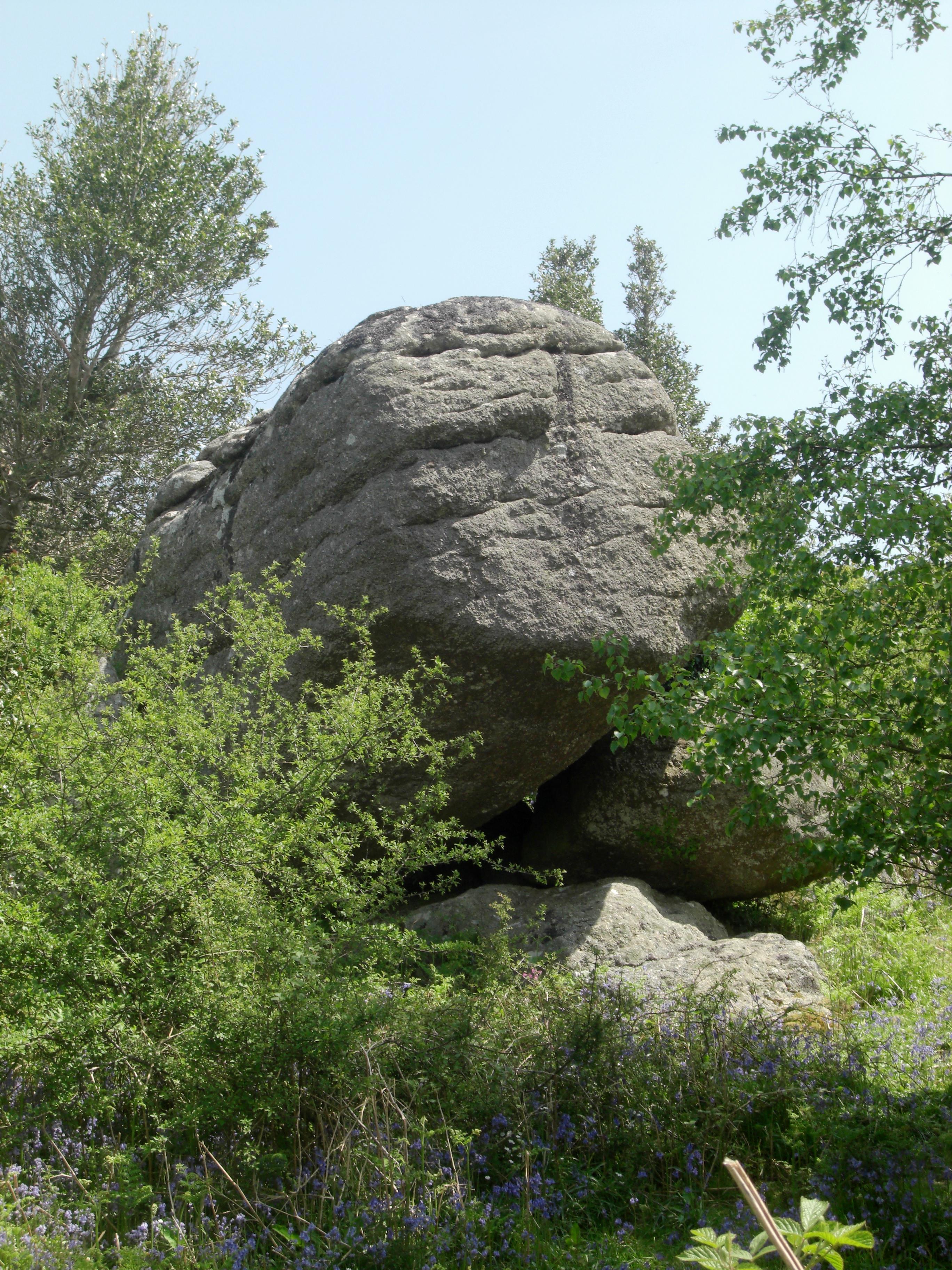 Pinmoor Rocks Frog This is a spectacular rock pile in the vicinity of the much better known Willingstone Rock about three miles to the north of Moretonhampstead. The first use of the name Pinmoor Rocks appears in the book 'Geology of the Country around Okehampton' from 1968 and is accredited to the Institute of Geological Sciences where they write 'Pinmoor Rocks is the name of a prominent granite tor 300 yd E.N.E. of Willingstone Rock. The tor is composed of well-jointed big-feldspar granite with megacrysts up to about 75 mm across.' However, writing earlier in 1944 Arthur Wilde refers to the same tor by the name of Wooston Rocks and in his account provides what is an early example of a mimetolith when he writes 'On another visit to Wooston Rocks a mist suddenly arose as I neared the summit and one of those grotesquely shaped boulders looked like a huge frog with its mouth open and about to take a leap.' It is likely that the rock to which the author alludes is the one in the photograph as it certainly has some froglike features. Haytor Quarry SX 759774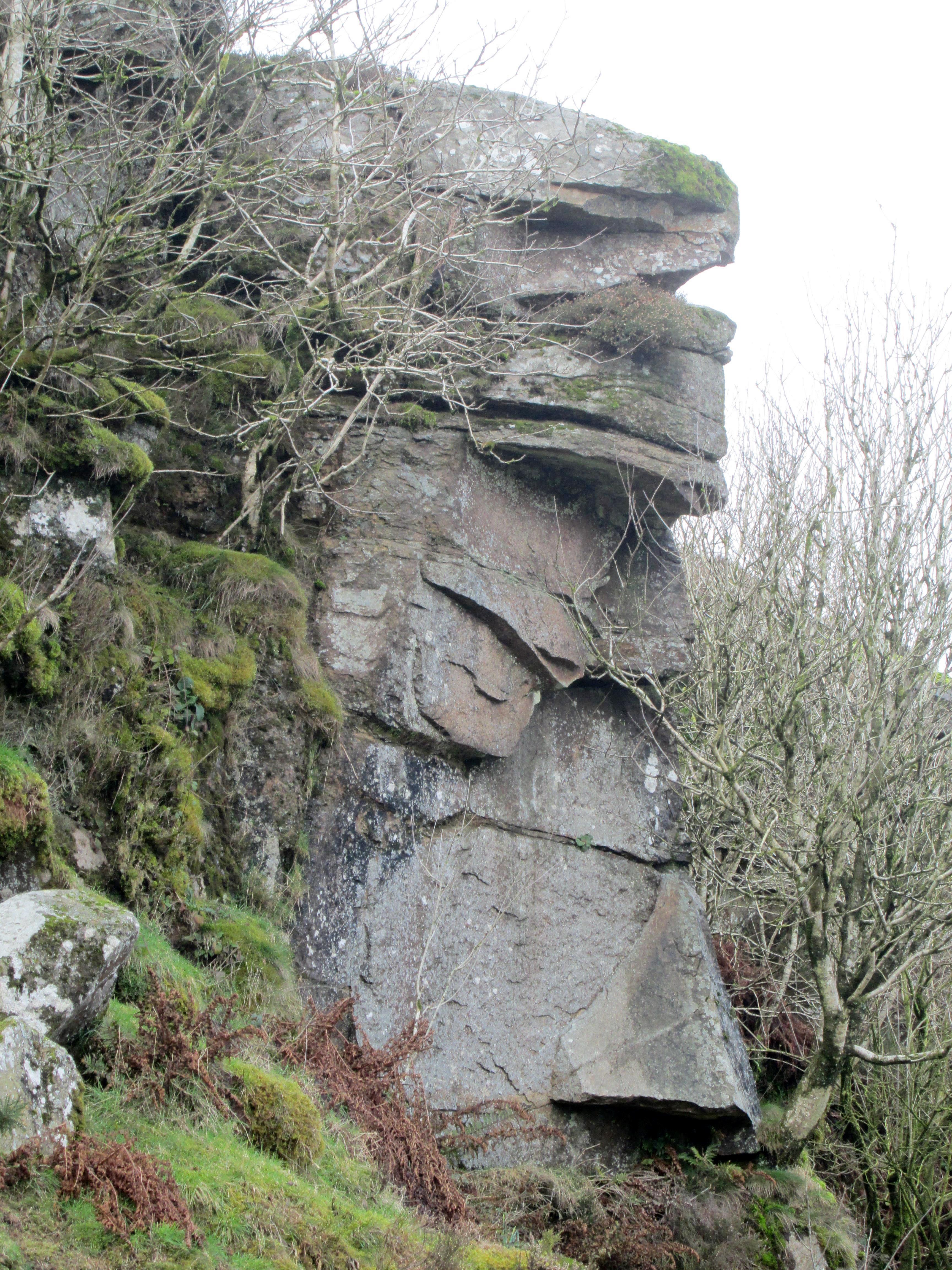 Haytor Quarry Face Dating from at least 1820 when the granite tramway was constructed, the abandoned main quarry at Haytor is now a well-known beauty spot and is visited by hundreds of people every year. On the northwest side of the pool is a tremendous granite rock face that over the past two hundred years or so has been shaped by both the elements and human endeavour into a commanding facial profile that overlooks the water resembling a giant guardian of the quarry floor. From the south it is a most impressive outline set with heavy brow, strong jutting nose and jaw. Here we have a true rock giant with attitude as if about to pull up his shoulders out of the dirt. Beardown Corner Rocks SX 592783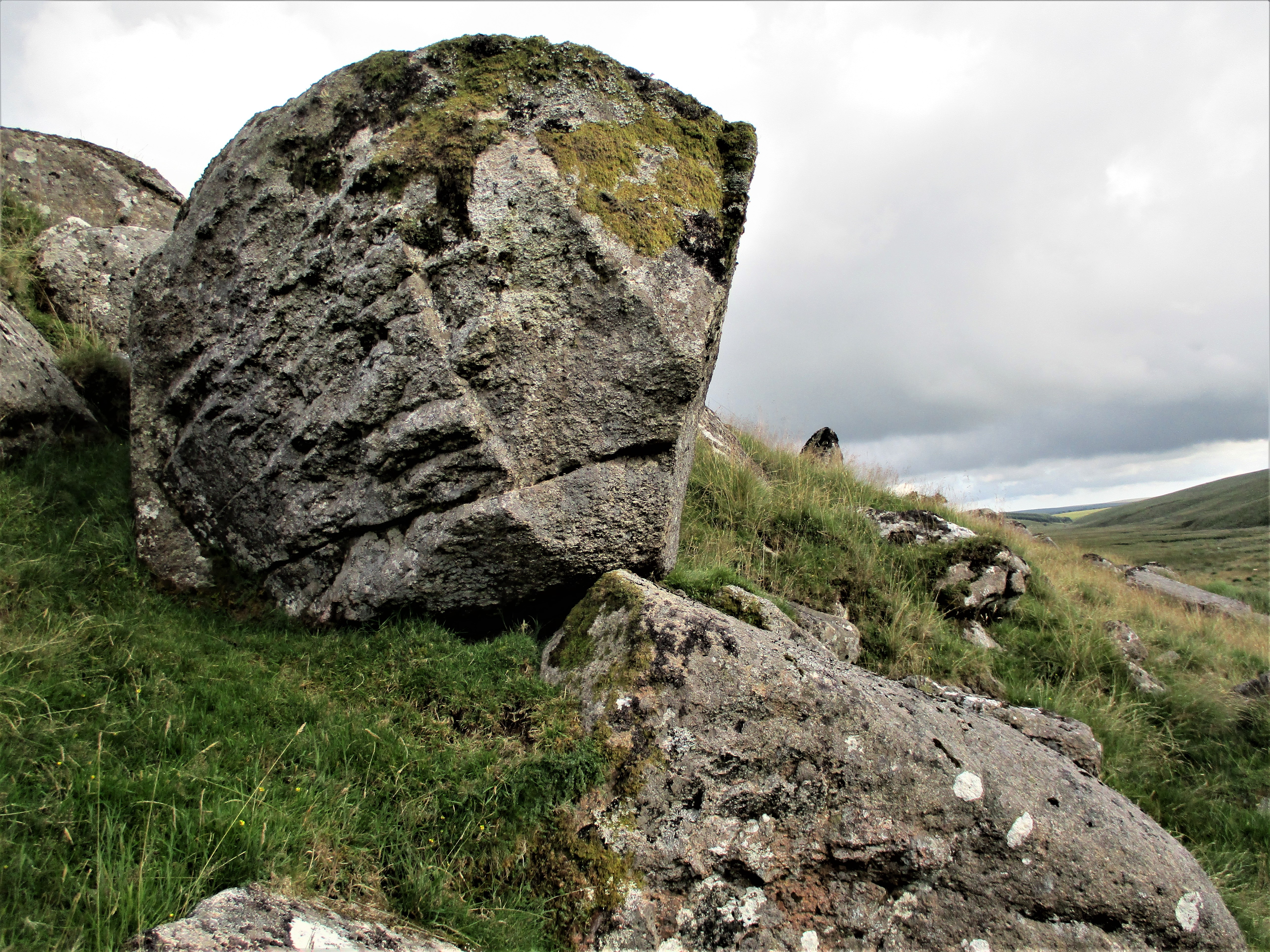 Beardown Corner Rocks There is a huge spread of granite on the east side of the Cowsic River at the far north-west corner of the Beardown Newtake, that is known locally as Beardown Corner Rocks. Here above and below the wall are some fascinating and strangely shaped almost outcrop type boulders. Amid the upper section is a perched rock that when viewed from the north takes on the appearance of an enigmatic human face as if shaped by nature into a work of art, it is quite striking. Hollow Tor SX 731762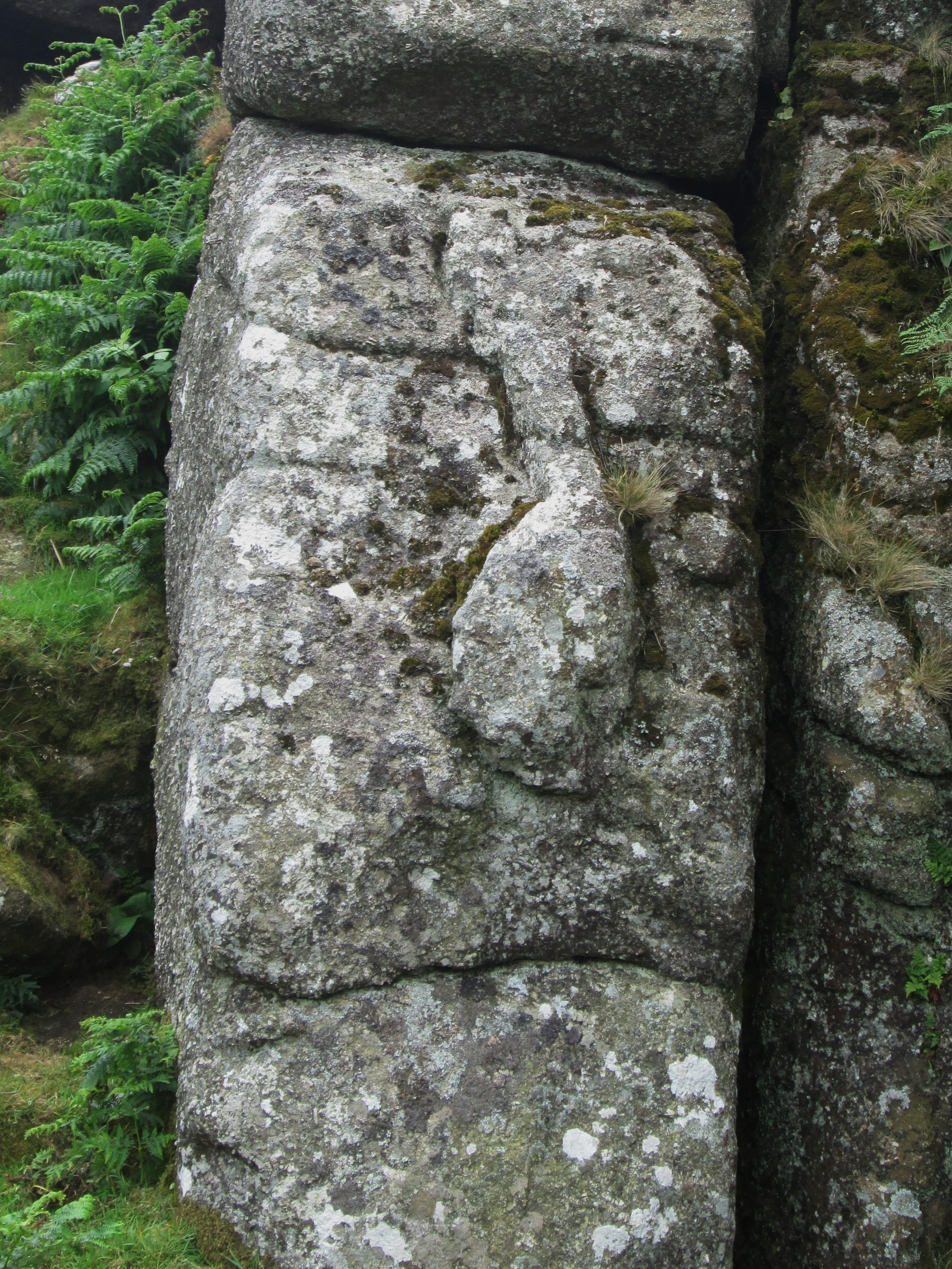 Hollow Tor Face Low down on the west side of Hollow Tor a mile or so to the south-east of Widecombe in the Moor is a curiously shaped rock face that resembles that of a sleeping person. The lines in the granite are so arranged that together with strands of moss form flattened facial features such as a pair of closed eyes, a nose and mouth that overlook the slopes high above Rugglestone Rock it is a remarkable human likeness. Sharp Tor (Yar Tor Down) SX 686729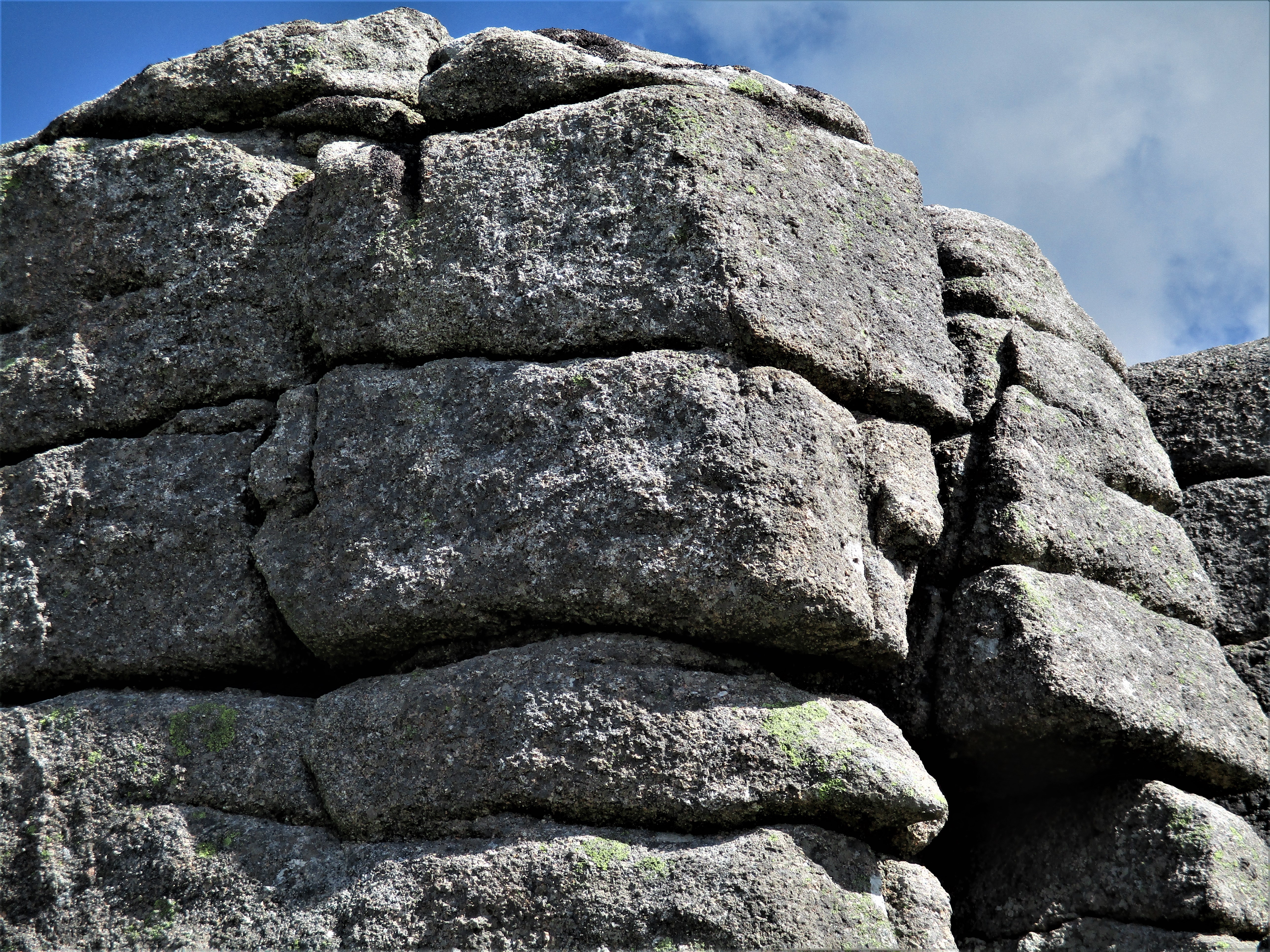 Sharp Tor Face One of Dartmoor's best-known tors and with magnificent views has near to its summit on the west side a rock with an excruciating expression almost as if the granite face has a permanent headache. The frown is crumpled with closed eyes giving the impression that the sunlight is piercing the stone. Once you see the face you will not forget it. Hartland Tor SX 641799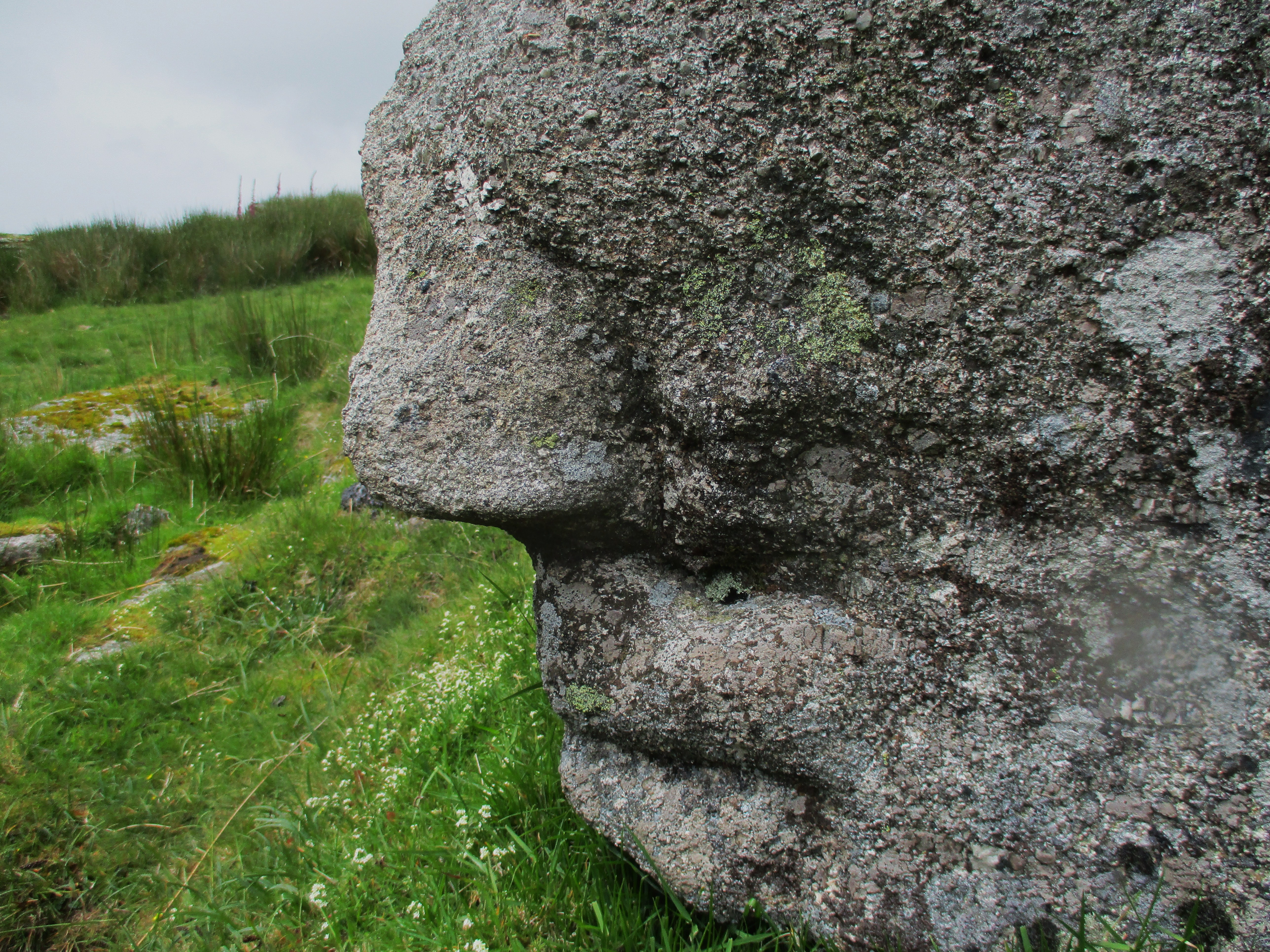 Hartland Tor Face Low down on the most upper southwest outcrop of Hartland Tor to the north of Postbridge is an unusual rock shape that gives the impression of either sadness or thoughtfulness. Looking back towards the East Dart River it is depending upon individual perception seen either as a visage of serenity or melancholy. It is mesmerising. Culliver Stack SX 744793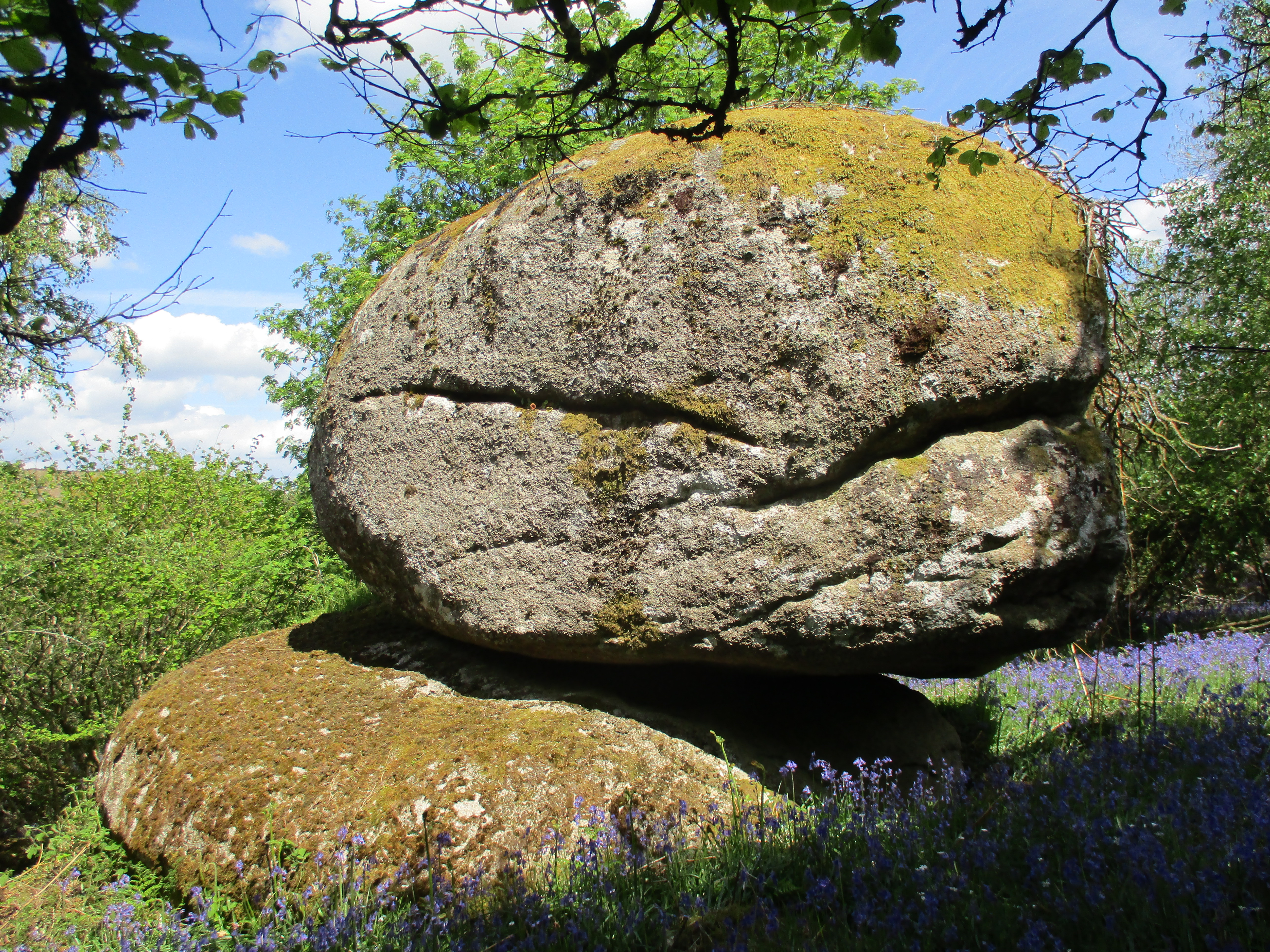 Culliver Stack Face Just below the road and well to the north of Great Hound Tor in the parish of Manaton is a most unusual looking rock formation. Discovered by Max Piper in 2019 and named Culliver Stack on account of it residing in plots of land shown as 'Culliver' on the Tithe Map of 1840, it presents as a huge, rounded rock that is balanced on a smaller flatter one beneath. From certain angles the splits in the main rock take on the form of a somewhat spiteful looking alien head. One of the best times to visit this part of the moor is during the month of May when the small wood here is adorned with a carpet of bluebells but be warned the stack lies just on private land although it can still be seen from a parcel of public land nearby to the south. Little Holwell Tor SX 750774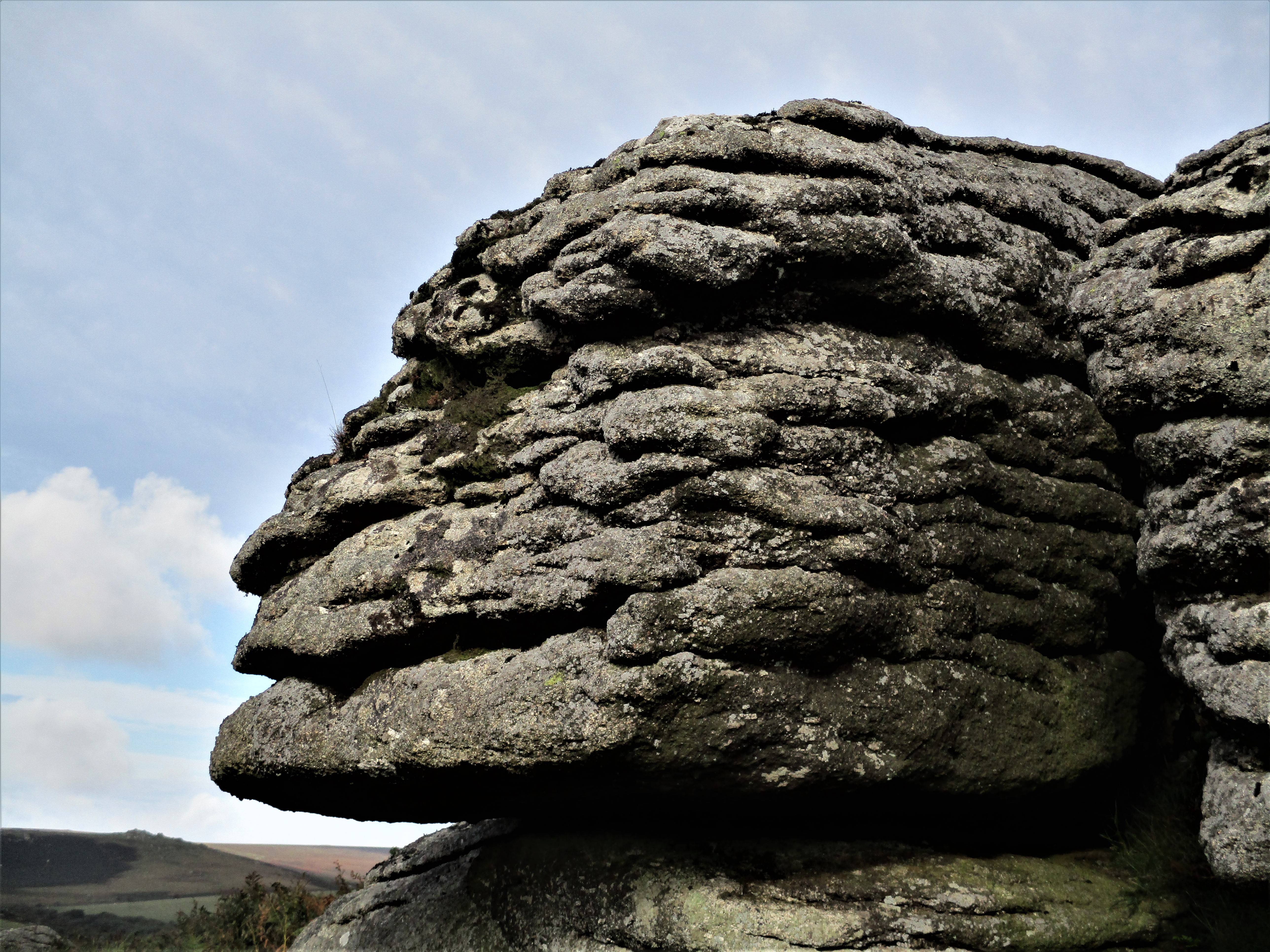 Little Holwell Face On the far south-western edge of the small tor known as Little Holwell there is a remarkably fissured rock face that looks back towards the grand sprawl of Emsworthy Rocks. It has a curiously gnarled expression that gives the impression of great age and wisdom but with a somewhat stern outlook having stood for centuries observing the scene here to the south and weathering the storms. It is a face of eternity. Blackalder Tor SX 568615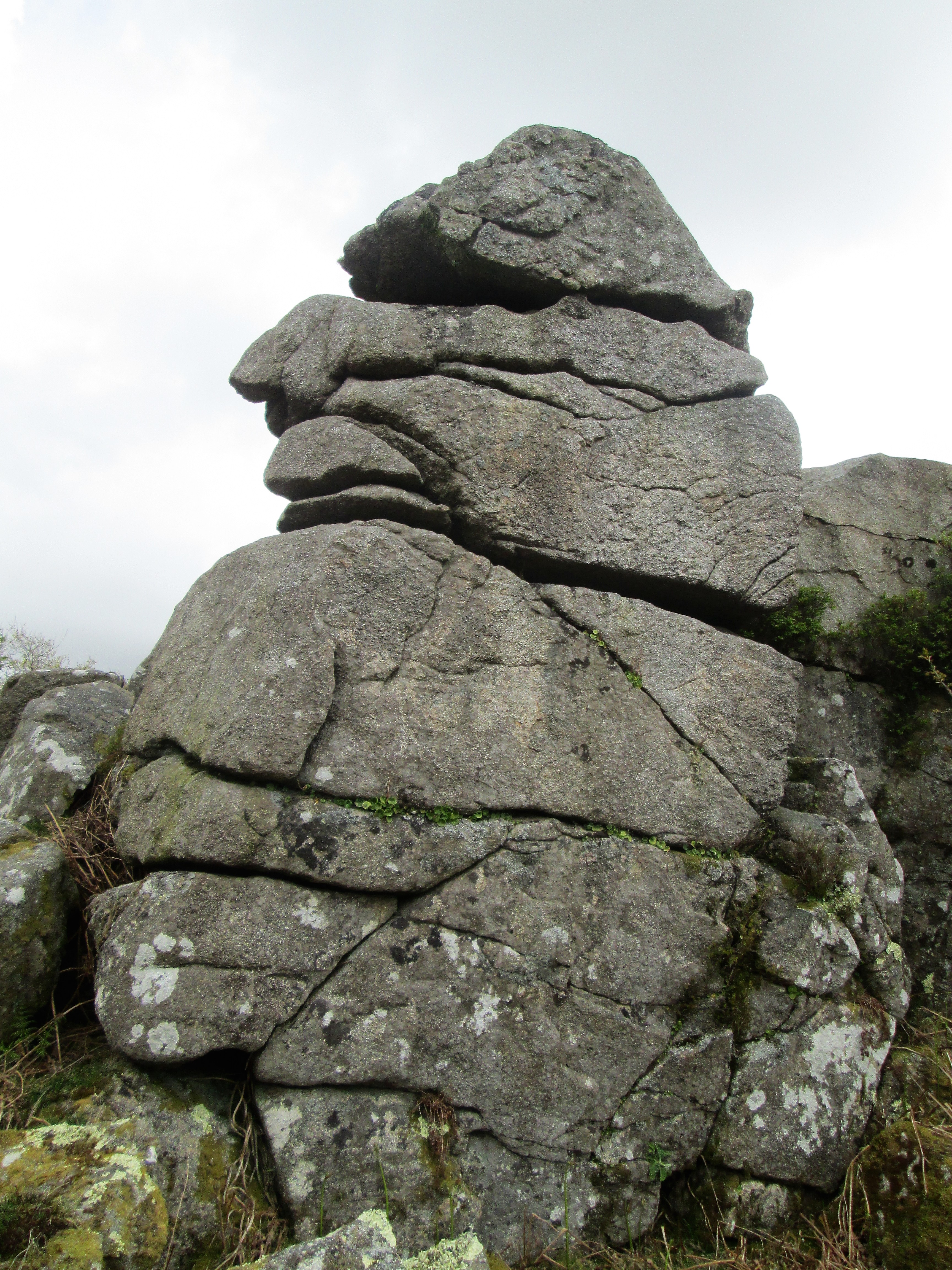 Blackalder Tor Face Not far from the village of Lee Moor on South Dartmoor lies this spectacular tor that is very underrated in the literature. Its middle section is the most impressive and contains two distinct split stacks the largest of which when seen from below resembles a huge but very grumpy looking stone giant with a large nose and contorted features. The tor's ruin spreads downhill to just above the road as it tumbles through oak woodland. Easily reached via a footpath from the village it is surprising that the tor does not receive more attention. This concludes what has been a short excursion to some of the rock formations on Dartmoor that could in my opinion be likened to facial features or so called mimetoliths. However, in the end it turns out that the quirky images that we think we see in the granite of Dartmoor do not really exist and are just figments of human imagination, but they are still good fun to look for but not to be taken too seriously. References
|